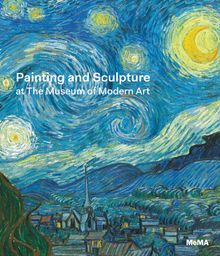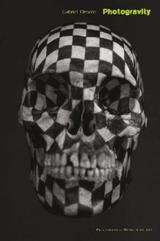| |||||||||||||||||||||||||||||||
CURATOR INDEX
|
|
STATUS: Out of stock indefinitely. |
 Jasper Johns: Regrets
Jasper Johns: Regrets
Published by The Museum of Modern Art, New York.
Text by Ann Temkin, Christophe Cherix.
Ann Temkin is an American art curator, and currently the Marie-Josée and Henry Kravis Chief Curator of Painting and Sculpture at the Museum of Modern Art in New York.
Christophe Cherix was appointed The Robert Lehman Foundation Chief Curator of Drawings and Prints at The Museum of Modern Art in 2013. His appointment followed a reorganization that merged the Department of Prints and Illustrated Books, of which Mr. Cherix had been Chief Curator since 2010, with the Department of Drawings. He joined the Museum’s curatorial staff in July 2007, after serving as curator of the Cabinet des Estampes at the Musée d'art et d'histoire in Geneva. His specialty is modern and contemporary art, with a particular focus on the art of the 1960s and 1970s.
PUBLISHER
The Museum of Modern Art, New York
BOOK FORMAT
Hardcover, 9 x 10.5 in. / 72 pgs / 45 color.
PUBLISHING STATUS
Pub Date 8/31/2014
Active
DISTRIBUTION
D.A.P. Exclusive
Catalog: FALL 2014 p. 113
PRODUCT DETAILS
ISBN 9780870709586 TRADE
List Price: $24.95 CAD $33.95
AVAILABILITY
In stock
in stock $24.95 Free Shipping UPS GROUND IN THE CONTINENTAL U.S. |
 Robert Gober: The Heart Is Not a Metaphor
Robert Gober: The Heart Is Not a Metaphor
Published by The Museum of Modern Art, New York.
Introduction by Ann Temkin. Essay by Hilton Als. Chronology by Claudia Carson, Paulina Pabocha with Robert Gober. Afterword by Christian Scheidemann.
Robert Gober was born in 1954 in Wallingford, Connecticut. He has had numerous one-person exhibitions, most notably at the Dia Center for the Arts, New York; The Museum of Contemporary Art, Los Angeles; and Schaulager, Basel. In 2001, he represented the United States at the 49th Venice Biennale. Gober's curatorial projects have been shown at The Institute of Contemporary Art, Boston; The Menil Collection, Houston; Hammer Museum, Los Angeles; and the Whitney Museum of American Art, New York. He lives and works in New York.
Ann Temkin is an American art curator, and currently the Marie-Josée and Henry Kravis Chief Curator of Painting and Sculpture at the Museum of Modern Art in New York.
Hilton Als is an American writer and theater critic who writes for The New Yorker.
Claudia Carson is archivist and registrar to Robert Gober.
Paulina Pabocha is Assistant Curator in the Department of Painting and Sculpture at The Museum of Modern Art.
Christian Scheidemann is the Senior Conservator and President of Contemporary Conservation Ltd.
PUBLISHER
The Museum of Modern Art, New York
BOOK FORMAT
Hardcover, 6.5 x 9.75 in. / 272 pgs / 264 color.
PUBLISHING STATUS
Pub Date 10/31/2014
Active
DISTRIBUTION
D.A.P. Exclusive
Catalog: FALL 2014 p. 20
PRODUCT DETAILS
ISBN 9780870709463 TRADE
List Price: $45.00 CAD $60.00
AVAILABILITY
In stock
in stock $45.00 Free Shipping UPS GROUND IN THE CONTINENTAL U.S. |
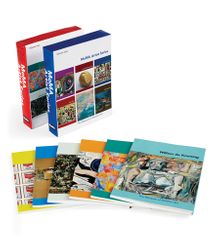 MoMA Artist Series Boxed Set, Volume One
MoMA Artist Series Boxed Set, Volume One
Published by The Museum of Modern Art, New York.
Text by Carolyn Lanchner, Ann Temkin.
PUBLISHER
The Museum of Modern Art, New York
BOOK FORMAT
Boxed, 6 vols, 6 x 8 in. / 288 pgs / illustrated throughout.
PUBLISHING STATUS
Pub Date 2/28/2014
Out of stock indefinitely
DISTRIBUTION
D.A.P. Exclusive
Catalog: SPRING 2014 p. 80
PRODUCT DETAILS
ISBN 9780870709470 TRADE
List Price: $49.95 CAD $60.00
AVAILABILITY
Not available
STATUS: Out of stock indefinitely. |
 Ileana Sonnabend: Ambassador for the New
Ileana Sonnabend: Ambassador for the New
Published by The Museum of Modern Art, New York.
Text by Ann Temkin, Leslie Camhi, Claire Lehmann.
PUBLISHER
The Museum of Modern Art, New York
BOOK FORMAT
Hardcover, 8 x 10 in. / 112 pgs / 55 color.
PUBLISHING STATUS
Pub Date 1/15/2014
Out of stock indefinitely
DISTRIBUTION
D.A.P. Exclusive
Catalog: SPRING 2014 p. 81
PRODUCT DETAILS
ISBN 9780870708961 TRADE
List Price: $29.95 CAD $39.95
AVAILABILITY
Not available
STATUS: Out of stock indefinitely. |
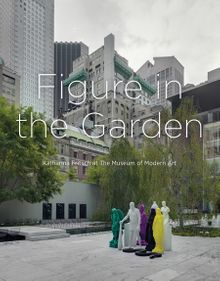 Figure in the Garden: Katharina Fritsch at The Museum of Modern Art
Figure in the Garden: Katharina Fritsch at The Museum of Modern Art
Published by Walther König, Köln.
Edited and with text by Robert Fleck. Interview with Katharina Fritsch, Tom Otterness, Ann Temkin.
PUBLISHER
Walther König, Köln
BOOK FORMAT
Hardcover, 7.75 x 9.75 in. / 104 pgs / 40 color / 30 bw.
PUBLISHING STATUS
Pub Date 10/31/2013
Active
DISTRIBUTION
D.A.P. Exclusive
Catalog: SPRING 2014 p. 174
PRODUCT DETAILS
ISBN 9783863353582 FLAT40
List Price: $40.00 CAD $54.00
AVAILABILITY
In stock
in stock $40.00 Free Shipping UPS GROUND IN THE CONTINENTAL U.S. |
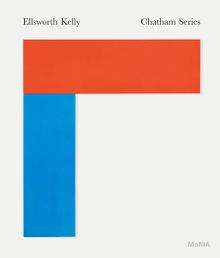 Ellsworth Kelly: The Chatham Series
Ellsworth Kelly: The Chatham Series
Published by The Museum of Modern Art, New York.
Text by Ann Temkin.
PUBLISHER
The Museum of Modern Art, New York
BOOK FORMAT
Hardcover, 9 x 10.5 in. / 48 pgs / 48 color.
PUBLISHING STATUS
Pub Date 6/30/2013
Out of stock indefinitely
DISTRIBUTION
D.A.P. Exclusive
Catalog: SPRING 2013 p. 107
PRODUCT DETAILS
ISBN 9780870708732 TRADE
List Price: $22.95 CAD $32.00
AVAILABILITY
Not available
STATUS: Out of stock indefinitely. |
 Claes Oldenburg: Writing on the Side 1956-1969
Claes Oldenburg: Writing on the Side 1956-1969
Published by The Museum of Modern Art, New York.
Edited by Achim Hochdörfer, Maartje Oldenburg, Barbara Schröder, Ann Temkin
Comprising the artist’s key writings from the late 1950s and 1960s, this volume makes available a wealth of previously unpublished material, including sections of the diary Oldenburg kept during these formative years, his notes (written on an old typewriter in his studio while standing), facsimiles of sketches that show his abiding interest in the relationship between image and language, plus statements, essays, scripts for Happenings and poems. In diverse styles, vivid descriptions of his environment alternate with intimate confessions, humorous anecdotes, psychological observations and self-analysis, characterizations of the art world and its protagonists, and recurring inquests into his own motivations.
This compilation, the first to be dedicated entirely to Oldenburg’s writings, shows an artist who is not only resolute, informed, and programmatic--deeply concerned with the art and society of his time--but also witty and playful in his confrontation with his own contradictions and ambiguities. The book provides a unique window into the formation and evolution of one of the most influential and ground- breaking contemporary artists, and a lively personal account of the 1960s.
Born in Stockholm, Sweden, in 1929, Claes Oldenburg grew up in Chicago and graduated from Yale University in 1950. After studying at the Art Institute of Chicago, he settled permanently in New York City in 1956. Oldenburg established himself in the early 1960s with a series of installations and performances, among them “The Street” (1960), “The Store” (1961) and “The Ray Gun Theater” (1962). At the end of the decade, Oldenburg began to fabricate works on a large scale, beginning with “Lipstick (Ascending) on Caterpillar Tracks” (1969), which was followed by other works such as “Geometric Mouse” (1969) and “Giant Ice Bag” (1970). His first architecturally scaled sculpture, the 45-foot-high “Clothespin,” was installed in downtown Philadelphia in 1976. Soon thereafter, he began working with Coosje van Bruggen, whom he married in 1977. Together they went on to realize 44 site-specific sculptures for cities in the United States, Europe, Japan and Korea.
PUBLISHER
The Museum of Modern Art, New York
BOOK FORMAT
Paperback, 7.5 x 11 in. / 438 pgs / 110 bw.
PUBLISHING STATUS
Pub Date 7/31/2013
Active
DISTRIBUTION
D.A.P. Exclusive
Catalog: SPRING 2013 p. 16
PRODUCT DETAILS
ISBN 9780870708701 TRADE
List Price: $39.95 CAD $53.95
AVAILABILITY
In stock
in stock $39.95 Free Shipping UPS GROUND IN THE CONTINENTAL U.S. |
 Henri Rousseau: The Dream
Henri Rousseau: The Dream
MoMA One on One Series
Published by The Museum of Modern Art, New York.
Text by Ann Temkin.
PUBLISHER
The Museum of Modern Art, New York
BOOK FORMAT
Paperback, 7.25 x 9 in. / 48 pgs / 35 color.
PUBLISHING STATUS
Pub Date 7/31/2012
Active
DISTRIBUTION
D.A.P. Exclusive
Catalog: SPRING 2012 p. 51
PRODUCT DETAILS
ISBN 9780870708305 TRADE
List Price: $14.95 CAD $21.00
AVAILABILITY
Out of stock
STATUS: Out of stock Temporarily out of stock pending additional inventory. |
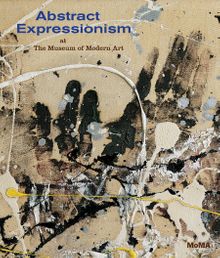 Abstract Expressionism at The Museum of Modern Art
Abstract Expressionism at The Museum of Modern Art
Published by The Museum of Modern Art, New York.
Text by Ann Temkin.
PUBLISHER
The Museum of Modern Art, New York
BOOK FORMAT
Hardcover, 9.25 x 10.75 in. / 124 pgs / 120 color.
PUBLISHING STATUS
Pub Date 10/31/2010
Active
DISTRIBUTION
D.A.P. Exclusive
Catalog: FALL 2010 p. 176
PRODUCT DETAILS
ISBN 9780870707933 TRADE
List Price: $35.00 CAD $47.50
AVAILABILITY
Out of stock
STATUS: Out of stock Temporarily out of stock pending additional inventory. |
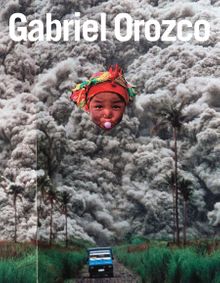 Gabriel Orozco
Gabriel Orozco
Published by The Museum of Modern Art, New York.
Text by Ann Temkin, Anne Byrd, Benjamin H. D. Buchloh, Briony Fer, Paulina Pobocha.
Gabriel Orozco (born in Mexico, 1962) studied at the Escuela Nacional de Artes Plásticas in Mexico City, and at the Círculo de Bellas Artes in Madrid, Spain. He has exhibited at the Whitney Museum of American Art, The Museum of Modern Art, New York, the Guggenheim Museum, the Philadelphia Museum of Art and the Venice Biennale. Orozco lives and works in New York, Paris and Mexico City.
PUBLISHER
The Museum of Modern Art, New York
BOOK FORMAT
Hardcover, 9.75 x 12.25 in. / 256 pgs / 435 color.
PUBLISHING STATUS
Pub Date 12/31/2009
Out of stock indefinitely
DISTRIBUTION
D.A.P. Exclusive
Catalog: FALL 2009 p. 13
PRODUCT DETAILS
ISBN 9780870707629 TRADE
List Price: $55.00 CAD $72.50
AVAILABILITY
Not available
STATUS: Out of stock indefinitely. |
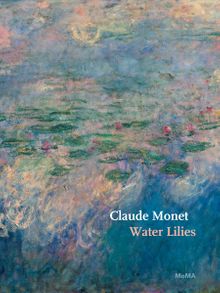 Claude Monet: Water Lilies
Claude Monet: Water Lilies
Published by The Museum of Modern Art, New York.
Text by Ann Temkin, Nora Lawrence.
PUBLISHER
The Museum of Modern Art, New York
BOOK FORMAT
Paperback, 6 x 8 in. / 48 pgs / 35 color.
PUBLISHING STATUS
Pub Date 10/31/2009
Out of stock indefinitely
DISTRIBUTION
D.A.P. Exclusive
Catalog: FALL 2009 p. 42
PRODUCT DETAILS
ISBN 9780870707742 TRADE
List Price: $12.95 CAD $18.50
AVAILABILITY
Not available
STATUS: Out of stock indefinitely. |
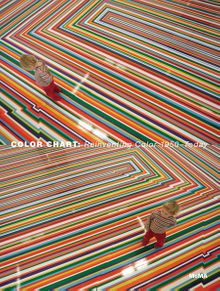 Color Chart
Color Chart
Reinventing Color: 1950 to Today
Published by The Museum of Modern Art, New York.
Text by Ann Temkin, Briony Fer. Melissa Ho, Nora Lawrence.
Published to accompany a major exhibition at The Museum of Modern Art, New York, this volume begins with Marcel Duchamp’s Tu m’, the artist’s final painting, made in 1918, with its long array of color samples looming across the canvas. This early recognition of color’s commercial nature was fully explored more than three decades later by artists such as Robert Rauschenberg, Andy Warhol, Gerhard Richter and Alighiero Boetti, who in the 1950s to the 1970s, with a host of others, redefined the parameters of color from a matter of personal expression to one of arbitrary systems and random processes. The repercussions of this transformation continue to be felt into the twenty-first century, in work by artists including Sherrie Levine, Mike Kelley and Damien Hirst, as well as others who explore color in digital technology This volume traces the lineage of the questions provoked by color’s new status, and the variety of answers that have resulted.
PUBLISHER
The Museum of Modern Art, New York
BOOK FORMAT
Clothbound, 9 x 12 in. / 248 pgs / 280 color.
PUBLISHING STATUS
Pub Date 3/1/2008
Out of print
DISTRIBUTION
D.A.P. Exclusive
Catalog: SPRING 2008 p. 46
PRODUCT DETAILS
ISBN 9780870707315 TRADE
List Price: $55.00 CAD $65.00
AVAILABILITY
Not available
STATUS: Out of print | 00/00/00 For assistance locating a copy, please see our list of recommended out of print specialists |
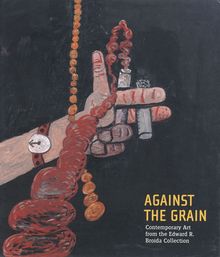 Against the Grain
Against the Grain
Contemporary Art from the Edward R. Broida Collection
Published by The Museum of Modern Art, New York.
Essay by John Elderfield. Interview by Ann Temkin.
PUBLISHER
The Museum of Modern Art, New York
BOOK FORMAT
Hardcover, 8.5 x 9.75 in. / 128 pgs / 86 color.
PUBLISHING STATUS
Pub Date 8/15/2006
Active
DISTRIBUTION
D.A.P. Exclusive
Catalog: FALL 2006 p. 63
PRODUCT DETAILS
ISBN 9780870700903 TRADE
List Price: $40.00 CAD $54.00
AVAILABILITY
In stock
in stock $40.00 Free Shipping UPS GROUND IN THE CONTINENTAL U.S. |
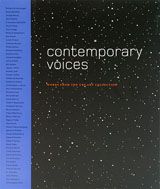 Contemporary Voices
Contemporary Voices
Works From the UBS Art Collection
Published by The Museum of Modern Art, New York.
Introduction by Glenn Lowry. Essay by Ann Temkin.
PUBLISHER
The Museum of Modern Art, New York
BOOK FORMAT
Clothbound, 9 x 10.75 in. / 264 pgs / 125 color / 5 bw.
PUBLISHING STATUS
Pub Date 2/15/2005
Active
DISTRIBUTION
D.A.P. Exclusive
Catalog: SPRING 2005 p. 98
PRODUCT DETAILS
ISBN 9780870700897 TRADE
List Price: $45.00 CAD $60.00
AVAILABILITY
In stock
in stock $45.00 Free Shipping UPS GROUND IN THE CONTINENTAL U.S. |
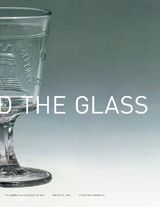 Christian Marclay: The Bell And The Glass
Christian Marclay: The Bell And The Glass
Published by Philadelphia Museum of Art/RelÇche, Inc..
Edited by Susan Rosenberg. Conversation with Christian Marclay, Thomas Y. Levin, Ann Temkin and Thaddeus A. Squire.
PUBLISHER
Philadelphia Museum of Art/RelÇche, Inc.
BOOK FORMAT
Paperback, 7 x 9 in. / 96 pgs / 70 color / 70 bw.
PUBLISHING STATUS
Pub Date 3/2/2004
No longer our product
DISTRIBUTION
D.A.P. Exclusive
Catalog: SPRING 2004
PRODUCT DETAILS
ISBN 9780876331736 TRADE
List Price: $29.95 CAD $35.00
AVAILABILITY
Not available
 Paul Klee: His Life And Work
Paul Klee: His Life And Work
Published by Hatje Cantz.
Edited by Jurgen Glaesemer. Essays by Carolyn Lanchner, Ann Temkin.
PUBLISHER
Hatje Cantz
BOOK FORMAT
Hardcover, 9.5 x 11.75 in. / 356 pgs / 142 color / 310 bw
PUBLISHING STATUS
Pub Date 6/2/2001
Out of print
DISTRIBUTION
D.A.P. Exclusive
Catalog: SPRING 2001
PRODUCT DETAILS
ISBN 9783775710022 TRADE
List Price: $49.95 CAD $60.00
AVAILABILITY
Not available
STATUS: Out of print | 12/19/2005 For assistance locating a copy, please see our list of recommended out of print specialists |
PUBLISHER
Philadelphia Museum of Art
BOOK FORMAT
Hardcover, 7.5 x 11 in. / 184 pgs / 30 color / 90 bw
PUBLISHING STATUS
Pub Date 3/2/2000
No longer our product
DISTRIBUTION
D.A.P. Exclusive
Catalog: SPRING 2000
PRODUCT DETAILS
ISBN 9780876331286 TRADE
List Price: $35.00 CAD $40.00
AVAILABILITY
Not available
 Robert Gober: Sculpture And Drawing
Robert Gober: Sculpture And Drawing
Published by Walker Art Center.
Artwork by Robert Gober. Text by Gary Garrels, Ann Temkin, Richard Flood.
PUBLISHER
Walker Art Center
BOOK FORMAT
Paperback, 8.25 x 11 in. / 144 pgs / 75 color / 75 bw
PUBLISHING STATUS
Pub Date 2/2/1999
Out of print
DISTRIBUTION
D.A.P. Exclusive
Catalog: SPRING 1999
PRODUCT DETAILS
ISBN 9780935640595 TRADE
List Price: $35.00 CAD $40.00
AVAILABILITY
Not available
STATUS: Out of print | 6/1/2005 For assistance locating a copy, please see our list of recommended out of print specialists |
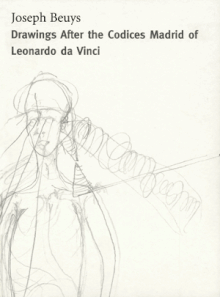 Joseph Beuys: Drawings Based On The Codices Madrid By Da Vinci
Joseph Beuys: Drawings Based On The Codices Madrid By Da Vinci
Published by Dia Art Foundation.
Artwork by Joseph Beuys. Contributions by Martin Kemp. Text by Ann Temkin, Cornelia Lauf.
PUBLISHER
Dia Art Foundation
BOOK FORMAT
Hardcover, 9.25 x 12.25 in. / 200 pgs / 98 color / 44 bw.
PUBLISHING STATUS
Pub Date 5/2/1999
Active
DISTRIBUTION
D.A.P. Exclusive
Catalog: SPRING 1999
PRODUCT DETAILS
ISBN 9780944521342 TRADE
List Price: $60.00 CAD $79.00 GBP £53.00
AVAILABILITY
Out of stock
STATUS: Out of stock Temporarily out of stock pending additional inventory. |
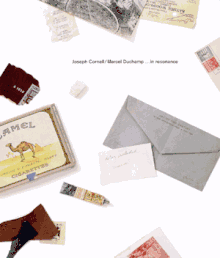 Cornell/Duchamp...In Resonance
Cornell/Duchamp...In Resonance
Published by Hatje Cantz.
Artwork by Joseph Cornell, Marcel Duchamp. Contributions by Walter Hopps. Text by Susan Davidson, Ann Temkin.
PUBLISHER
Hatje Cantz
BOOK FORMAT
Hardcover, 9.5 x 11.8 in. / 256 pgs / 110 color / 200 duotone.
PUBLISHING STATUS
Pub Date 11/2/1998
Out of print
DISTRIBUTION
D.A.P. Exclusive
Catalog: FALL 1998
PRODUCT DETAILS
ISBN 9783893224319 TRADE
List Price: $80.00 CAD $95.00
AVAILABILITY
Not available
STATUS: Out of print | 12/11/2007 For assistance locating a copy, please see our list of recommended out of print specialists |
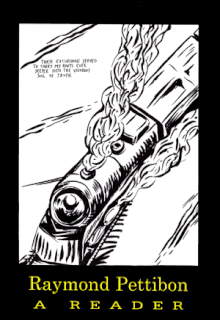 Raymond Pettibon: A Reader
Raymond Pettibon: A Reader
Published by Philadelphia Museum of Art.
Contributions by Susanne Ghez. Text by Ann Temkin, Anne d'Harnoncourt.
PUBLISHER
Philadelphia Museum of Art
BOOK FORMAT
Paperback, 6 x 9 in. / 352 pgs / 1 color / 50 bw.
PUBLISHING STATUS
Pub Date 9/2/1998
No longer our product
DISTRIBUTION
D.A.P. Exclusive
Catalog: FALL 1998
PRODUCT DETAILS
ISBN 9780876331200 TRADE
List Price: $24.95 CAD $27.50
AVAILABILITY
Not available
